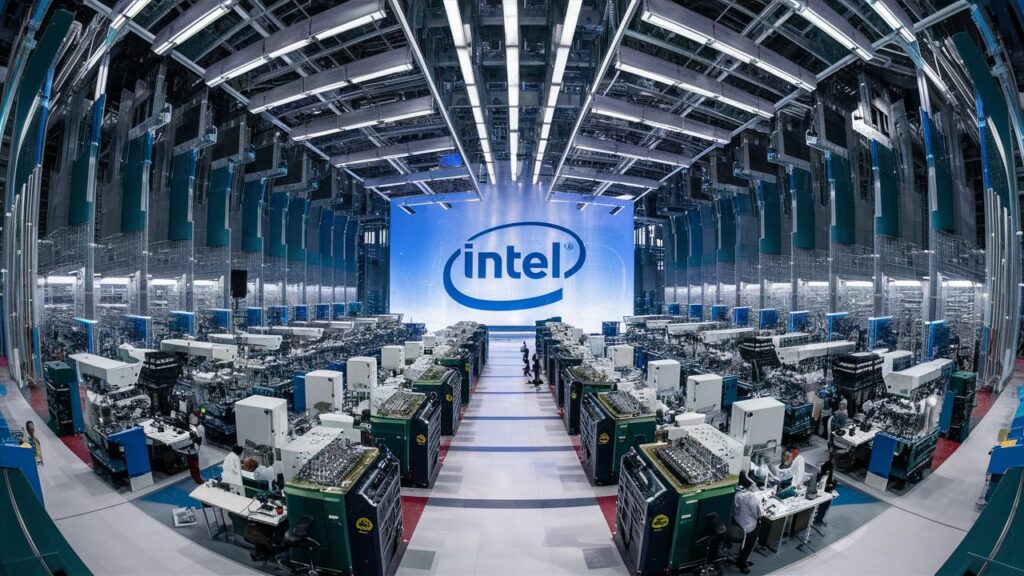Introduction
Intel Corporation, a titan of the technology sector, has shaped the digital revolution since its inception in 1968. Co-founded by Gordon Moore and Robert Noyce, Intel’s journey from a modest semiconductor startup to a global leader in computing hardware underscores its relentless pursuit of innovation. The company’s microprocessors, often dubbed the “brains” of modern computers, have powered generations of devices, from personal computers to data centers. Beyond silicon, Intel’s influence extends to artificial intelligence (AI), cloud computing, and autonomous systems, making it a cornerstone of technological progress. This article delves into Intel’s history, core technologies, challenges, and future aspirations, offering a holistic view of its role in an ever-evolving industry.
1. The Founding and Evolution of Intel Corporation
Intel’s origins trace back to Santa Clara, California, where Moore and Noyce sought to revolutionize semiconductor design. The company’s first breakthrough came with the invention of dynamic random-access memory (DRAM) chips, but its pivot to microprocessors in 1971 with the 4004 chip marked a turning point. The 8086 processor, released in 1978, became the foundation for the x86 architecture, still dominant in computing today. Over decades, Intel evolved from a component supplier to a tech powerhouse, navigating industry shifts such as the rise of mobile computing and the internet. Strategic acquisitions, including Altera (2015) and Mobileye (2017), expanded its reach into programmable chips and autonomous driving, showcasing its adaptability.
2. Intel’s Core Technologies and Product Portfolio
Intel’s product ecosystem revolves around advanced semiconductor technologies. Its Core, Xeon, and Atom processors cater to diverse markets, from consumer laptops to enterprise servers. The company’s manufacturing prowess, exemplified by innovations like FinFET transistors and 3D packaging (e.g., Foveros), ensures performance and energy efficiency. Beyond CPUs, Intel produces solid-state drives (SSDs), GPUs, and AI accelerators like the Habana Gaudi. The Optane memory technology bridges the gap between RAM and storage, while the Movidius VPU powers edge AI applications. This diversified portfolio positions Intel as a one-stop solution for computing needs across industries.
3. Leadership in Semiconductor Manufacturing
Intel’s integrated device manufacturing (IDM) model—controlling design and production—has long been a competitive edge. However, delays in transitioning to 10nm and 7nm processes highlighted challenges in maintaining Moore’s Law. In response, Intel launched IDM 2.0 in 2021, combining in-house fabrication with third-party partnerships and a new foundry service (IFS) to rival TSMC and Samsung. Investments of $20 billion in Arizona and Ohio fabs underscore its commitment to reclaiming process leadership. Advances like RibbonFET transistors and PowerVia backside power delivery, set for Intel 20A (2024), aim to redefine semiconductor scalability.

4. Intel’s Role in AI and Cloud Computing
As AI reshapes industries, Intel has positioned itself at the forefront with hardware and software solutions. Xeon Scalable processors and Habana Labs’ AI chips optimize data center workloads, while OpenVINO toolkit streamlines AI deployment on edge devices. In cloud computing, Intel’s collaboration with AWS, Google Cloud, and Azure ensures its Xeon and Optane technologies underpin scalable infrastructure. The oneAPI initiative promotes cross-architecture programming, reducing reliance on proprietary frameworks. These efforts reflect Intel’s strategy to democratize AI and cloud capabilities for enterprises.
5. Sustainability and Corporate Responsibility
Intel’s 2030 RISE strategy outlines ambitious sustainability goals, including net-zero greenhouse gas emissions and 100% renewable energy use. The company has reduced water waste by recycling 80% of its global water consumption and invests in circular economy practices. Socially, Intel’s Pandemic Response Technology Initiative supported healthcare during COVID-19, while its AI for Youth program fosters digital literacy. Diversity initiatives, such as achieving pay equity globally, highlight its commitment to inclusive growth.
6. Challenges and Competition in a Dynamic Market
Intel faces fierce competition from AMD’s EPYC CPUs, NVIDIA’s GPUs, and ARM-based designs dominating mobile and cloud markets. Manufacturing delays allowed TSMC and Samsung to lead in advanced nodes, eroding Intel’s process advantage. Geopolitical tensions and supply chain disruptions further complicate its global operations. To counter these threats, Intel is diversifying its supply chain, accelerating process roadmaps, and embracing open-source ecosystems like RISC-V. Partnerships with IBM and DARPA aim to innovate beyond traditional architectures.
7. The Future Outlook for Intel
CEO Pat Gelsinger’s IDM 2.0 vision seeks to restore Intel’s technological leadership by 2025. Upcoming nodes like Intel 4 (7nm EUV) and Intel 18A (1.8nm equivalent) promise performance leaps, while the IFS division targets capturing 30% of the foundry market by 2030. Investments in quantum computing, neuromorphic chips, and autonomous driving through Mobileye signal Intel’s ambition to lead emerging fields. Balancing innovation with sustainability will be critical as the company navigates a rapidly transforming tech landscape.
Conclusion
Intel Corporation’s legacy as a tech pioneer is undeniable, yet its future hinges on executing bold strategies amid unprecedented challenges. By leveraging its engineering expertise, expanding into AI and foundry services, and prioritizing sustainability, Intel aims to remain indispensable to the digital economy. As the industry evolves, Intel’s ability to adapt and innovate will determine whether it continues to shape the next era of computing.
Frequently Asked Questions (FAQs)
Q1: When was Intel founded, and by whom?
Intel was founded on July 18, 1968, by semiconductor pioneers Gordon Moore and Robert Noyce, with Andrew Grove joining as an early key leader.
Q2: What are Intel’s most iconic products?
The Intel 4004 (first commercial microprocessor), Pentium processors, and Xeon server CPUs are among its most influential innovations.
Q3: How is Intel addressing environmental concerns?
Intel aims to achieve net-zero emissions by 2040, uses 100% renewable energy, and prioritizes water conservation and circular manufacturing practices.
Q4: Who are Intel’s main competitors?
Key rivals include AMD in CPUs, NVIDIA in GPUs, TSMC/Samsung in manufacturing, and ARM in mobile/cloud architectures.
Q5: What is Intel’s focus for the future?
The company is investing in advanced process nodes, AI/cloud infrastructure, foundry services, and emerging technologies like quantum computing.
This article provides a deep dive into Intel’s past, present, and future, illustrating its enduring impact on technology and society.
